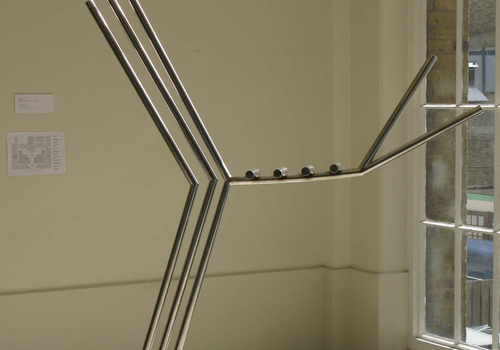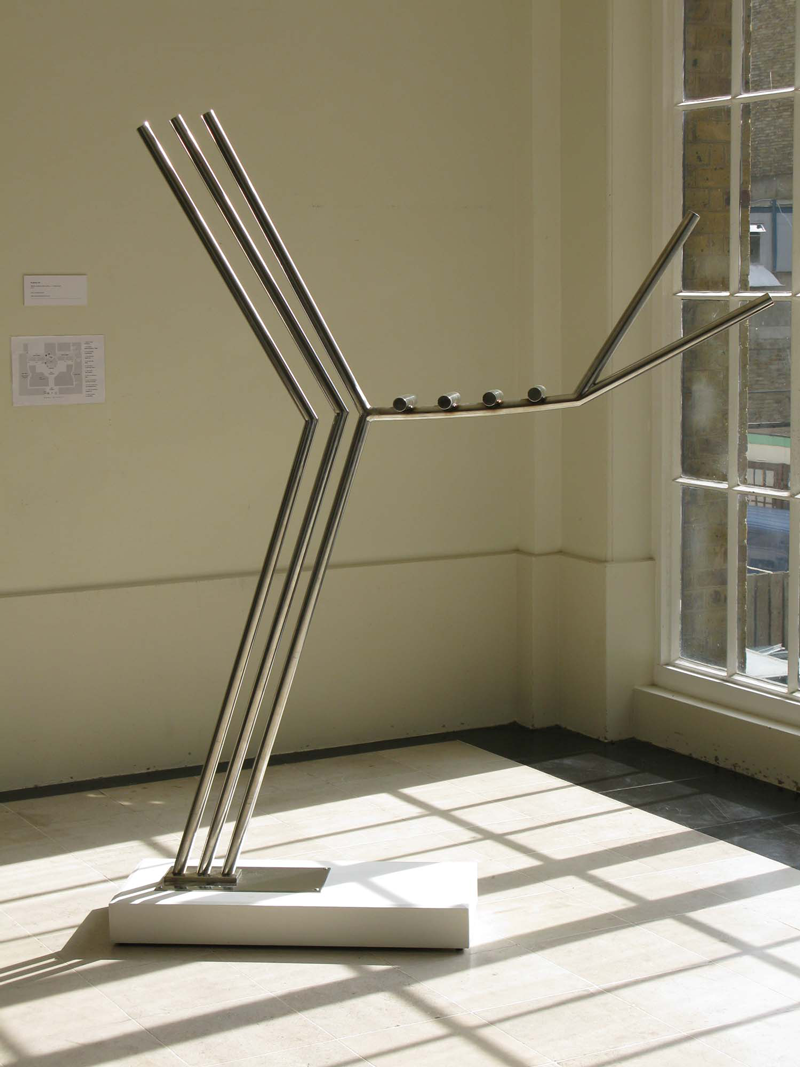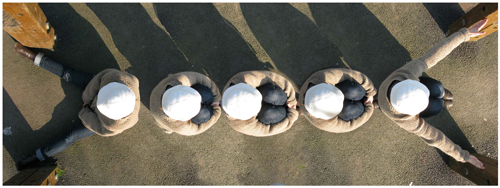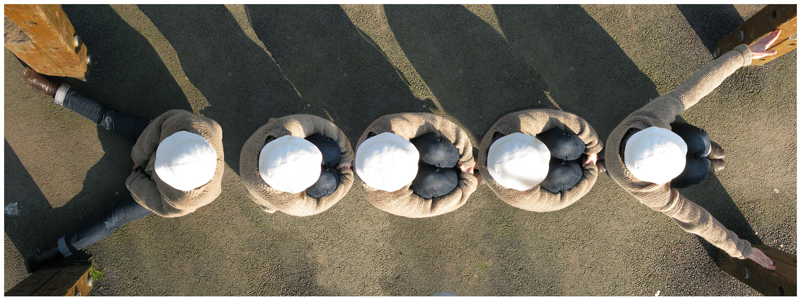Arts & Culture: Feynman for All
Three wide arrowheads, a wavy squiggle, followed by two straight lines connected in a V shape. Minimal graphical representations such as this translate pages of mathematics describing the behavior of subatomic particles into the language of Feynman diagrams, which is accessible to everyone regardless of their scientific background. It was this simplicity that inspired Andy Charalambous, a conceptual artist based in London, to use Feynman diagrams as the focus of his recent series of sculptures (Fig. 1), and photographs (Fig. 2).
Charalambous is an engineer turned artist, whose artwork is stimulated by physics. “It’s hard not to be creative,” he says, when you are surrounded by all the brilliant ideas that scientists are working on. In 2011, he approached Mark Lancaster, head of the high-energy physics group at University College London (UCL), about a possible art residency and has had a desk in their offices ever since. Charalambous is also involved in art@CMS, an education and outreach program run by the particle-physics experiment called CMS at CERN’s Large Hadron Collider. The collaborations give Charalambous easy access to scientists, whose brains he can pick about physics research or to fact-check his projects. “We make sure he doesn’t do something that is scientifically crazy,” said Lancaster, who checked the Feynman diagrams on which Charalambous’s sculptures are based.
But physics isn’t solely a muse for Charalambous’s creative output. He is also interested in broadening science participation and reaching out to new audiences. To outsiders, physics can be hard to penetrate because of its technical terminology and equations. Art allows these barriers to be stripped away and scientific ideas to be conveyed in their simplest form. Taking a single scientific concept, like neutrinos or singularity, as his starting point, Charalambous transforms it into artwork that art lovers and scientists alike can connect with. And once they have been drawn in, the art provides a platform for an interested viewer to explore the physics that motivated the piece.
“I get a buzz when the audience sees a bit of science through my art and starts to realize what [the science] is all about,” says Charalambous. He hopes that encountering physics through art can help to make physics more accessible and less exclusive.
Wider participation in science is an issue that resonates with the physicists Charalambous works with. According to Lancaster, the outreach activities organized by UCL’s physics department are geared towards high-school students already studying science. Art can reach a different set of people who wouldn’t normally seek science out. Having artists in the lab also benefits Ph.D. students and postdocs. “They get to meet a different cross section of people and get out of their cloistered environments,” says Lancaster. These interactions can spur new ideas and directions for their research. “Collaborations with artists not only make what we are doing accessible to the public, they also encourage creativity in our teams,” says Austin Ball, the technical coordinator at the CMS experiment, who has worked with Charalambous. “An idea for an [alternative] layout of a detector [at CERN] was inspired by artwork that was inspired by a detector. You can see the feedback going on.”
Art and physics are often considered polar opposites of one another. Breaking down this misconception could encourage a wider variety of people into science, who would bring with them new perspectives on how to tackle the big scientific problems. “Both disciplines need creativity, initiative, and out-of the-box thinking,” says Ball, who sees considerable overlap between his work at CERN—overseeing the design, construction, and maintenance of CMS—and that of visiting artists.
Ball worked with Charalambous to put together his Feynman-inspired sculptures. It turns out that building a sculpture in stainless steel and constructing detectors aren’t so different—both require specialist welding for example. Charalambous wanted the sculpture to appear as if it were floating in space. Nothing can freely float (at least on Earth) so they put their heads together and came up with a support design that used the minimum possible material. According to Ball, it didn’t feel any different to working on a lightweight detector, which for performance reasons would be impeded by heavy supports. “All of us had as much fun helping Andy to realize his artistic idea as we do turning a concept for a new detector into a real working thing,” says Ball.
–Katherine Wright
Katherine Wright is a Contributing Editor for Physics.







